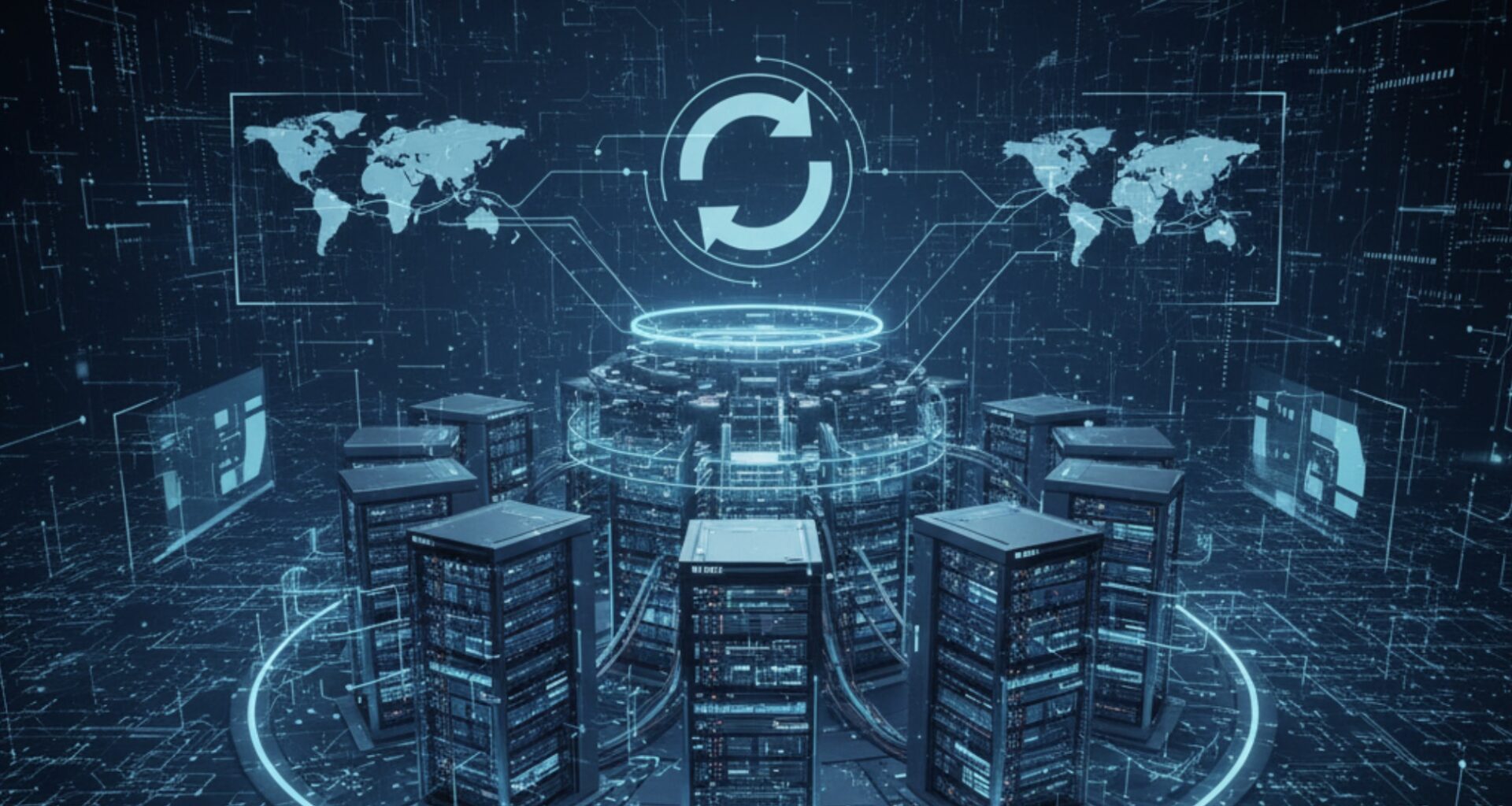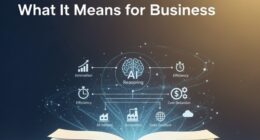Thesis. OpenAI’s plan to rent roughly $100 billion of backup server capacity over the next five years isn’t just belt‑and‑suspenders engineering. It’s a signal that, in AI, reliability at massive scale—not model novelty alone—has become the competitive moat. For businesses across the stack (clouds, chips, utilities, enterprises), that pivot concentrates demand, reshuffles bargaining power, and pulls capital and policy into a long game where compute, power, and placement dominate strategy. Reuters
The context: the AI buildout has entered its “infrastructure supercycle”
- Megacap spending tops $300B in 2025. Multiple trackers and earnings tallies put combined AI and data‑center capex for Microsoft, Amazon, Alphabet, and Meta at >$300 billion this year—a step‑change from 2024’s run‑rate. That capital underwrites land, power, chips, and interconnects as the new sources of advantage. Financial Times
- OpenAI is diversifying beyond Azure. After years of Microsoft primacy, OpenAI has added Google Cloud, expanded ties with Oracle, and contracted specialist providers like CoreWeave—a shift from a single strategic partner to a portfolio of capacity sources. Reuters+3Reuters+3Reuters+3
- The backup plan goes big. On September 19, 2025, Reuters reported that OpenAI plans to rent about $100B of backup servers over five years, part of a broader forecast to spend roughly $350B on server rentals through 2030; importantly, executives expect those backup servers to be monetizable (i.e., usable revenue capacity when demand surges). Reuters
Bottom line: Compute has become the primary competitive differentiator, and OpenAI’s move formalizes a doctrine many operators are converging on: multi‑cloud, multi‑region, multi‑vendor—and always with warm spare capacity.
Why “backup servers” matter commercially (not just technically)
- Capacity is the product. When outages, rate limits, or waitlists gate usage, functionality exists in name only. OpenAI has repeatedly wrestled with demand‑driven rate limits and staging rollouts; adding fungible backup capacity addresses a concrete business risk: revenue lost to scarcity. OpenAI Help Center+1
- Resilience is now a revenue lever, not an SLA footnote. Backup capacity makes it possible to launch higher‑duty features (multi‑modal reasoning, real‑time voice, or heavy agents) without crippling the rest of the service, shifting reliability from a cost center to a growth enabler. (Reuters explicitly notes OpenAI expects backup servers to be monetizable.) Reuters
- Procurement leverage. A portfolio of clouds cuts single‑vendor concentration risk and strengthens negotiations on price, priority access to new accelerators, and power‑adjacent deals (e.g., long‑term energy‑backed capacity). Reuters
- Regulatory and reputational cover. Diversification reduces antitrust scrutiny around exclusive tie‑ups and aligns with emerging requirements for data residency and sovereign hosting. Microsoft’s “AI edge” story is already being examined through the lens of OpenAI’s cloud diversification. Reuters
Who wins, who adjusts
1) Hyperscalers & specialist clouds
- Oracle: The outsize winner of this pivot (and of 2025 overall). A reported $300B, five‑year compute contract with OpenAI would be among the largest in cloud history, pulling Oracle directly into the frontier‑AI core. Expect visibility, volume, and financing advantages to compound. Reuters
- Google Cloud: Lands a marquee workload—and with it, credibility that rivals training workloads need redundant homes. Reuters confirmed OpenAI added Google as a listed supplier. Reuters+1
- Microsoft Azure: Still central, but exclusivity fades. Analysts now frame Microsoft’s advantage as durable but negotiated—not automatic—given OpenAI’s multi‑provider posture. The relationship remains deep, even as the moat shifts from exclusivity to integration and silicon. Reuters
- CoreWeave: The specialist GPU cloud is a structural beneficiary, with multi‑billion‑dollar contracts and a role in Google–OpenAI routing. For enterprises, this legitimizes “mixing” hyperscalers with specialists for GPU‑dense workloads. Reuters+1
Implication for business buyers: The market is normalizing around multi‑sourcing compute—so your cloud strategy, contracts, and observability need to assume plural providers for the same AI workload.
2) Chipmakers and systems
OpenAI’s redundancy strategy pulls forward demand for accelerators and interconnects; it rewards vendors with reliable supply at cluster scale. While Nvidia remains the default, diversified capacity increases the attractiveness of compatible stacks (e.g., cloud TPUs, custom silicon) as credible failover paths. (This is consistent with hyperscaler capex guidance tilting to AI systems.) Financial Times
3) Energy, power markets, and data‑center real estate
The backup capacity arms race collides with power realities:
- Electricity demand is surging. The IEA projects global data‑center electricity use to roughly double to ~945 TWh by 2030, with AI the largest driver; the EIA sees U.S. consumption at record highs in 2025–26 on data‑center load. Utilities are already revising earnings outlooks upward on AI demand. IEA+2Reuters+2
- OpenAI leadership has been explicit that AI will require far more power than many expect; Altman has called for energy breakthroughs and even suggested a significant fraction of Earth’s power could ultimately be spent on AI compute. (That’s the verifiable claim; the specific “more than the entire U.S. grid” phrasing is widely echoed online but not reliably sourced.) Reuters+1
Implication: Power availability (MW now, GW later), not just GPUs, becomes the binding constraint. Expect more long‑dated PPAs, grid‑adjacent projects, and siting in power‑rich regions. The cost of assured megawatts will flow through to AI pricing.
4) Enterprises that consume AI (everyone, in practice)
- More dependable capacity and steadier limits. When providers carry monetizable reserves, customers see fewer product pauses, tighter SLAs, and more predictable rate limits—especially for high‑duty features. (OpenAI’s own tiered limits and recent reliability issues highlight the business pain of scarcity.) OpenAI Help Center+1
- Data‑residency options improve. A multi‑cloud backend makes it easier for OpenAI and peers to offer regional hosting options that satisfy localization rules—key for regulated industries.
5) Investors and boards
- Capex to opex mix. OpenAI’s choice to rent backup capacity shifts costs to operating leases and reserved commitments; that enhances scalability and optionality, but raises fixed obligations that demand strong unit economics. (Reuters’ coverage explicitly frames the backup pool as capacity that can be monetized.) Reuters
- Cloud market share may rebalance at the margin. Single mega‑deals can move needles—the Oracle–OpenAI contract is a case in point—while multi‑sourcing blunts the value of exclusivity. Reuters
Strategic takeaways by role
For CIOs/CTOs
- Engineer for portability. Assume the best model today may not live on the same provider or region tomorrow. Use provider‑agnostic adapters, neutral vector stores, and evaluation harnesses that can swap endpoints without rewrites.
- Contract for failover, not just discounts. Insist on pre‑provisioned, tested hot/warm failover with clear egress/ingress fee waivers during incidents and credits tied to both uptime and throughput delivered under load.
- FinOps for AI specifically. Track tokens, context windows, model fallbacks, and burst multipliers per workflow; build “surge budgets” that price the value of elasticity during product launches or seasonal spikes.
For CFOs/COOs
- Treat AI capacity as an input commodity. Hedge price (committed‑use discounts), volume (reserve headroom), and basis (regional power risk). Multi‑sourcing reduces single‑supplier risk but introduces synchronization and observability overhead—budget for it.
- Link spend to SLAs users feel. Tie payments to latency under load, successful request rate, and observed rate limits during your own traffic patterns—not just monthly uptime.
For founders and product leaders
- Launch plans must include capacity plans. If your feature depends on high‑duty inference (agents, long‑context reasoning, video), reserve burst capacity ahead of launches—or build delayed queues with honest UX.
- Consider a two‑tier model strategy. Keep a “production‑safe” model family and a “frontier‑when‑available” path gated behind usage‑aware toggles—so your business doesn’t stall when frontier capacity tightens.
Risks and unknowns
- Energy and siting risk. Power‑first siting will collide with local permitting and water constraints. The IEA’s doubling forecast and U.S. grid records suggest the binding constraint is increasingly electrical, not just silicon. IEA+1
- Deal execution risk. Mega‑contracts (e.g., OpenAI–Oracle) span years; financing, supply chain, and technology shifts (new architectures or accelerators) could alter cost curves mid‑stream. Reuters
- Regulatory drift. As AI capacity consolidates among a few providers, expect scrutiny of exclusive access, preferential routing, and cross‑ownership—already a theme in coverage of Microsoft’s position. Reuters
What this means in one sentence
OpenAI’s backup‑server strategy is a business model choice: convert spare capacity into a growth and reliability flywheel, and in doing so, lock the entire ecosystem—clouds, chipmakers, utilities, and customers—into a decade where compute availability and power are the real currencies of AI.
Sources
- OpenAI backup capacity & multi‑year spend: Reuters on OpenAI’s plan to rent ~$100B in backup servers and ~$350B total server rentals through 2030; monetization expectations for backup pool. Reuters
- Oracle–OpenAI mega‑deal: Reuters summary of WSJ reporting on a ~$300B, five‑year compute agreement. Reuters
- OpenAI diversification: Reuters on adding Google Cloud; Reuters on listed cloud suppliers (Microsoft, Google, Oracle, CoreWeave). Reuters+1
- Microsoft’s advantage under scrutiny amid diversification: Reuters analysis note. Reuters
- Megacap AI capex (> $300B, 2025): Financial Times reporting on combined hyperscaler spending. Financial Times
- Energy and power demand: IEA projections (doubling to ~945 TWh by 2030); EIA/Reuters on record U.S. electricity demand; utility earnings uplift tied to AI data‑centers. IEA+2Reuters+2
- Capacity limits & reliability pressure: OpenAI release notes on rate limits; Tech press coverage of repeated outages. OpenAI Help Center+1
- Altman on energy constraints: Reuters (Davos) on need for energy breakthroughs; widely quoted “significant fraction of Earth’s power” remark. (Note: we did not find a reliable primary source for the specific claim that OpenAI might need “more power than the entire U.S. grid.”) Reuters+1
Quick diagnostic for your company
- Are your highest‑revenue workflows protected by a tested cross‑cloud failover?
- Do your AI contracts include throughput‑under‑load and burst commitments, not just uptime?
- Have you priced the power basis risk of your AI roadmap (region by region)?
If any answer is “no,” OpenAI’s strategy is your nudge to upgrade your own.









